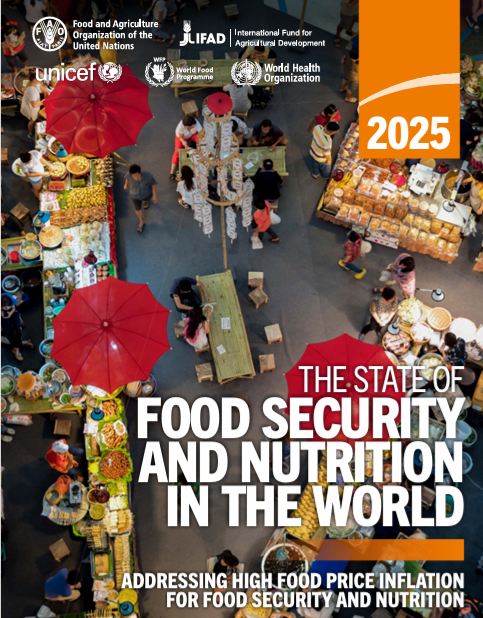Addressing high food price inflation for food security and nutrition
SOFI is an annual report co-authored by five UN agencies: the International Fund for Agricultural Development, the World Food Programme, the World Health Organisation, the Food and Agriculture Organisation and the UN Children’s Fund. It is a crucial stocktake of global progress to achieve SDG2.1: Zero Hunger and SDG2.2: End all forms of malnutrition, and identify where further effort is needed to accomplish these goals. It launched during the Second UN Food Systems Summit Stocktake (UNFSS+4) in Addis Ababa.
SOFI 2025 findings:
- After years of rising hunger, new and updated data from the 2025 SOFI report shows a modest decline in global hunger in 2024. Despite this welcome downturn, as many as 720 million people went to bed hungry. At this rate, the world will not achieve SDG2 with 512 million hungry people projected in 2030 – of whom, 60% will live on the African continent.
- At the regional level, there is mixed progress with declines in hunger in South America, and South-eastern and Southern Asia but a continued increase in Africa where hunger was experienced by 307 million people or 20.2% of the population in 2024. Globally and in every region of the world, women are more likely to be hungry than men.
- Food price inflation – the thematic focus of this year’s report – affects every country in the world. Over the last five years, food price inflation peaked at 30% in May 2023 but wages have not kept pace. This has driven up the cost of a healthy diet and forced low-income households to make difficult choices between food and other life essentials with severe impacts for food security and nutrition: a 10% food price increase leads to a 3.5% rise in food insecurity and a 4.3% rise in child wasting. Low-income countries experienced some of the highest increases in food prices while also being limited in their ability to respond adequately.
- 2.6 billion people were unable to afford a healthy diet in 2024. The decline in the global figure masks uneven progress at the regional level: the number of people unable to afford a healthy diet rose on the African continent (1 billion people) and in low-income (545 million people) and lower-middle-income countries (869 million people). Rises in food prices drove up the cost of a healthy diet in 2024.
In Africa, hunger was experienced by 307 million people or 20.2% of the population in 2024

